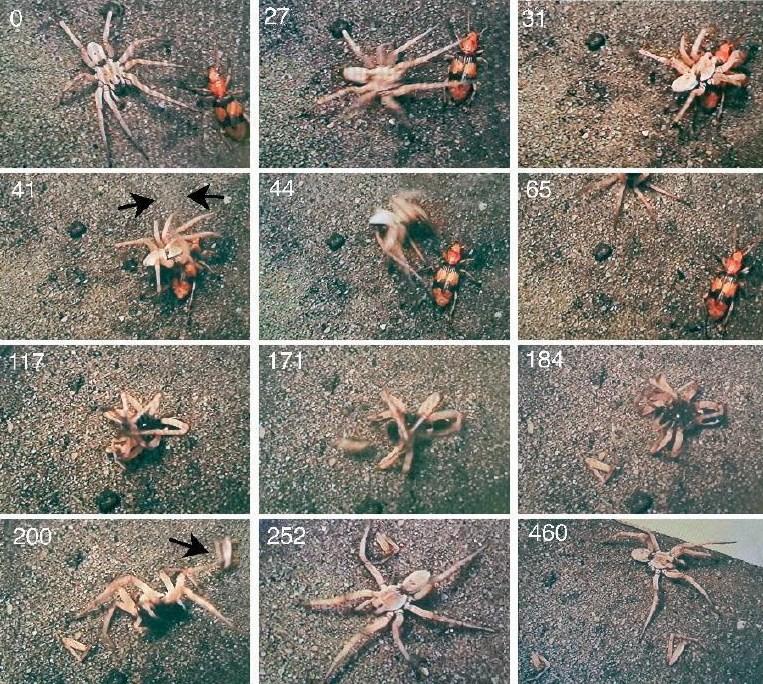Bombardier Defense
Biology 342 Fall 2012
Authors: Jacob Kraus, Claire Brumbaugh-Smith
| Home | Phylogeny | Ontogeny | Mechanism | Adaptive Value | References | Course Home |
Adaptive Value
Predation Avoidance
The short explanation for the adaptive value of the Bombardier beetle’s defensive technique is that it maximizes its fitness by defending itself in this manner. However, upon a closer examination, it appears as though both the severity of and the incredible accuracy of the defensive technique are key. Via an intense exothermic reaction (see mechanism), the beetle produces a spray about as hot as 100 degrees Celsius! Fu rthermore, the beetles have been shown to actually move their abdomens so as to aim them when spraying. They can spray both under and over their bodies hand have been found to positionally track the movements of their abuser resulting in sprays often aimed at the legs or leg segments. (Eisner and Aneshansley 1999)
rthermore, the beetles have been shown to actually move their abdomens so as to aim them when spraying. They can spray both under and over their bodies hand have been found to positionally track the movements of their abuser resulting in sprays often aimed at the legs or leg segments. (Eisner and Aneshansley 1999)
In one study, a wolf spider (Lycosa ceratiola) was placed near the spraying end of the beetle to observe the defence’s effects on the spider. After being bombarded by the spray, the spider was found to autotomize, or remove, several of its legs. (Eisner, Aneshansley et al. 2006)
When tested against the attacks of other predators, the spray served to seemingly paralyze the predator while the beetle made its escape. In another experiment, beetles were placed in the web of the golden-orb web spider (Nephila clavipes). As the spider approached the beetle, the beetle’s abdomen rotated and fires. Throughout multiple trials, the resulting spray routinely hit the spider in either the mouth or the legs causing the spider focus on  cleansing itself. Distracting the spider, the beetle gave itself ample time to free itself from the web and escape. (Eisner and Dean 1976)
cleansing itself. Distracting the spider, the beetle gave itself ample time to free itself from the web and escape. (Eisner and Dean 1976)
Persistent Predators
One interesting thing to note is that this defensive technique is not always effective for some predators have actually evolved a way around the spray. For example, several species of Blue Jays, like the one in the image below, actually cause the beetles to spray into the Jay’s plumage, a process known as “anting”. Similarly, the technique known as “sand-wiping” is used by the Florida Scrub Jay in which the beetles are tricked into spraying on sand. As a result of both of these methods, the beetle’s spray is dissipated and thus, the beetle is defenceless against its avian predators.
(Eisner, Eisner et al. 2005)
As the Blue Jay in this image demonstrates, the bombardier beetle's defensive techniques do not work all the time. Upon capturing the beetle (left), the Blue Jay tucks it under its wing where it causes the beetle to deliver its spray. By doing this, the beetle's defensive chemicals hit the non-sensitive Jay feathers (middle) until eventually, the beetle runs out of chemicals. At this point, the beetle is no match for the Jay and is subsequently eaten (right).
